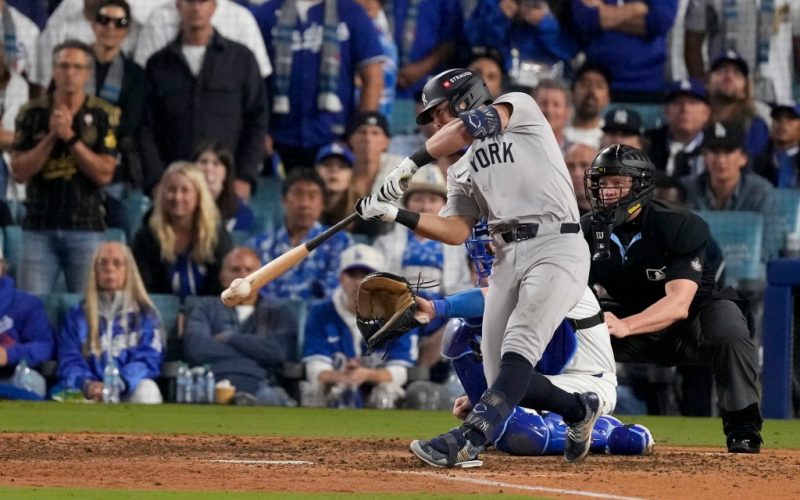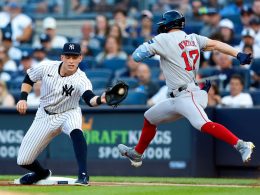As Anthony Volpe prepares for his third big league season, the Yankees are hoping the shortstop can parlay an encouraging October into a full season of offensive production.
The 23-year-old’s Gold Glove defense has made him a lineup fixture despite short-lived bursts and extended droughts at the plate. But Volpe hit .286/.407/.408 with three doubles, one home run — a grand slam in Game 4 of the World Series — six RBI, 10 walks and 13 strikeouts during the Yankees’ playoff run. That followed a regular season in which Volpe slashed .243/.293/.364 with 12 home runs, 60 RBI, 42 walks, 156 strikeouts and an 86 wRC+.
That poor production came after Volpe flattened his bat path over the offseason in an effort to make more contact, as he hit .209 as a rookie in 2023. Instead, contact remained an issue after some early-season BABIP luck, and he sacrificed power after joining the 20-20 club in Year 1.
Volpe’s postseason was especially noticeable after he hit .194/.250/.242 over his last 47 regular season games. However, he capitalized on the Yankees’ bye in the playoffs, using the time to make a few tweaks that allowed him to get behind the ball better.
“The week off leading into the postseason, the little adjustments I saw, it was like, ‘Boom!’ It leapt off the screen,” Aaron Boone said at the Winter Meetings. “’That’s it! That’s it right there!’”
Volpe’s modifications and strong postseason coincided with a boost in bat speed.
According to now-public bat tracking data, Volpe’s bat speed improved to 71.6 mph in the playoffs after clocking in at 69.5 mph in the regular season. Boone didn’t know the exact numbers when asked about the uptick, but that lined up with his eye test.
“I haven’t seen the bat tracking, but I’m not surprised because I know what I was watching every single day, and that’s what we want,” he said. “When you see it, ‘Yes!’”
While Volpe’s bat speed only improved by a few miles per hour in October, he enjoyed larger gains in other metrics, including…
- Expected Batting Average: .238 regular season vs. .332 postseason
- Exit Velo: 87.7 mph regular season vs. a 95.8 mph postseason
- Hard-Hit%: 35.4% regular season vs. a 53.0% postseason
- Squared-Up %: 26.2% regular season vs. a 46.9% postseason
- Line Drive%: 21.1% regular season vs. 41.7% postseason
- Pull%: 32.1% regular season vs. 36.1% postseason
- Groundball%: 50.2% regular season vs. 30.6% postseason
- Soft Contact%: 15.8% regular season vs. 0.0% postseason
Volpe also showed more selectivity at the plate, increasing his BB% while lowering his chase rate.
The question now is whether Volpe’s small, 14-game postseason sample can translate to an entire season. If so, the speedster could be more than just a bottom of the order hitter after batting eighth or ninth for most of September.
“I think the different adjustments and things he’s done are going to serve him well in the end, and we are going to look up in several seasons and we’re going to see a really good offensive player,” Boone said, echoing sentiments he shared during the season. “I’m really confident that what I saw from him in the final weeks of the season and then certainly into the postseason is absolutely something that will hopefully carry over to where he becomes more and more of a consistent offensive player.”
What that looks like remains to be seen.
Can Volpe flirt with 20 home runs on a yearly basis moving forward? How about a .300 average? Or an on-base percentage above .300, something he easily recorded in the minors each year but hasn’t achieved as a big leaguer?
Boone didn’t want to make any statistical predictions. But after watching Volpe’s playoff performance, he’s as confident as ever that the infielder’s bat has more to offer.
“Does it manifest itself more in average? Is there more power? I don’t know,” Boone said before restating himself. “But I think we’re going to see a very good offensive player when it’s all said and done.”








